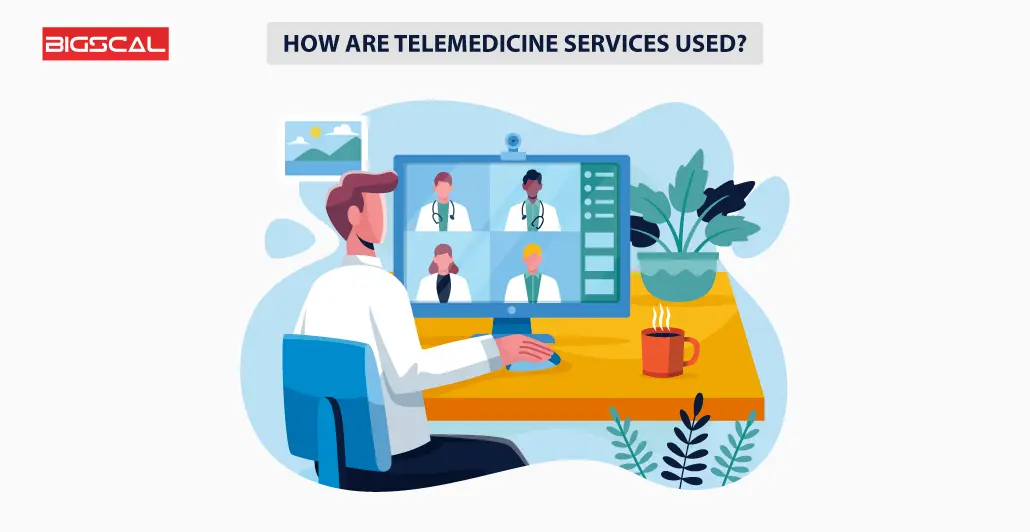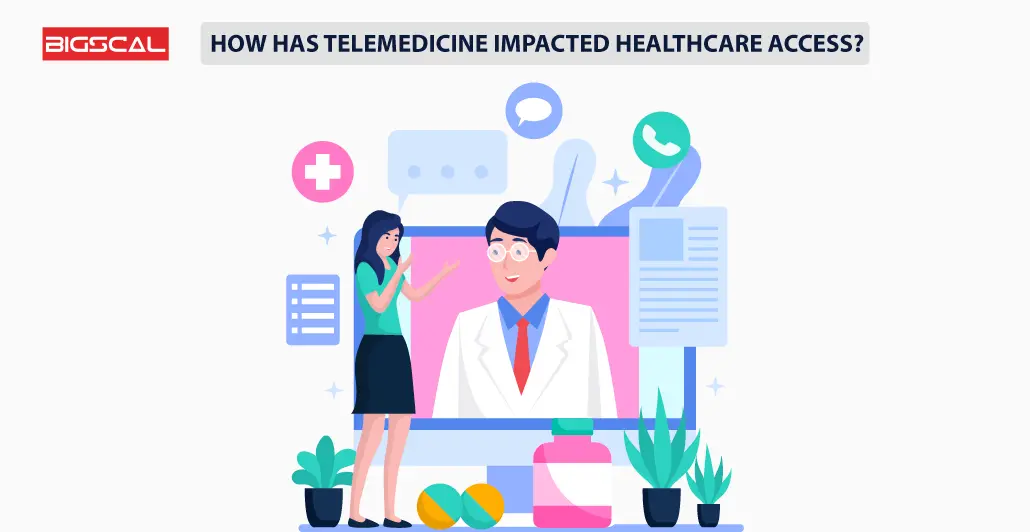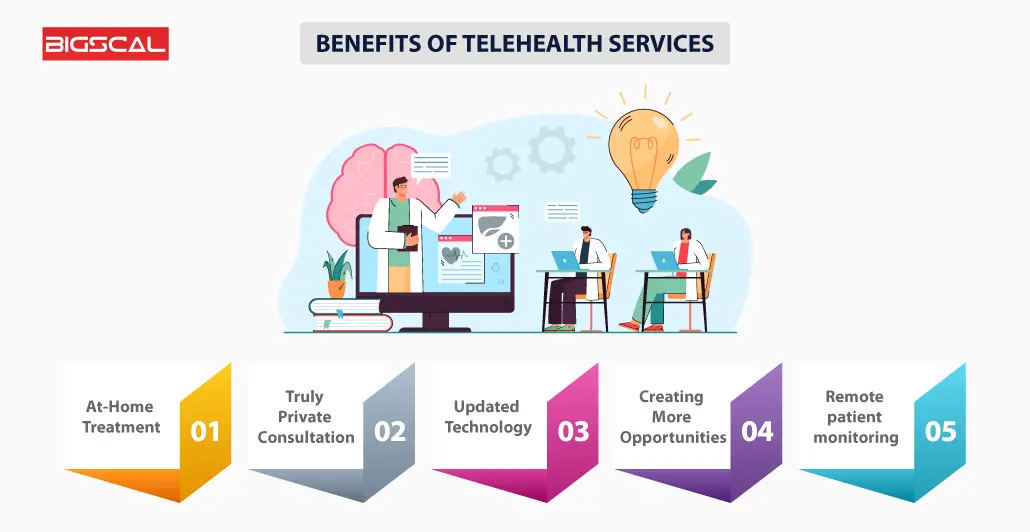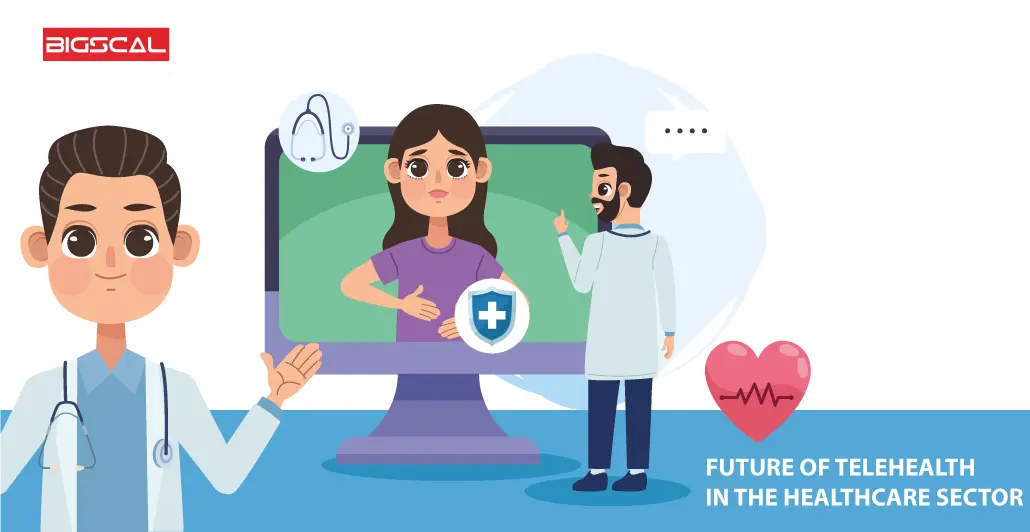How has Telemedicine Impacted Healthcare?
Quick Summary: It is imperative to acknowledge how telemedicine has altered the face of healthcare. Telemedicine has transformed the face of healthcare by offering consultations, diagnosis, and treatment over distances. It has easily opened access to medical care, bridged geographical barriers of personal care, and increased health efficiency, especially in the face of the COVID-19 pandemic. Telemedicine continues transforming healthcare delivery by making it convenient and timely to the patients all over the world.
Introduction
Telemedicine improves the access of health care to patients with no regard to their location. Therefore it simply puts down health care service delivery remoter and connects health care providers to patients. With visits through telemedicine, a patient can reach out to the primary care physicians, nurse practitioners, specialists, or professionals through a virtual visit, consultations, phone calls, or messaging.
Telemedicine is changing the landscape of healthcare and the health care delivery in itself by seeking the help of telecommunication technologies. Thus, time is passing with health care becoming more patient-centered, effective, and accessible. Besides all this, it is making people take control of their health. All of this taken together could likely have a big impact on the health care system.
The last couple of years have revolutionized the industry through telemedicine. The COVID-19 pandemic has further fuelled the adoption of digital health and health services. As technology and demand for convenient and accessible healthcare delivery evolve, almost everybody knows what is telemedicine services?
This article will guide you to understand how has telemedicine impacted healthcare, benefits, and its future. From better patient satisfaction and access to cost savings, we will assess different aspects of Telemedicine in healthcare and its role in the coming time.
What is Telemedicine in Healthcare?
Telemedicine, also known as telehealth services, provides healthcare services and health via any communication technology from a remote location.
Telehealth adoption enables providers to undertake physical exams, educate, and treat patients without one’s need to visit the health urgent care center or provider’s office. Thus, one can experience clinical outcomes from away from the medical center. Virtual visits empower the Patient to speak with his/her physician from one’s comfort zone.
A telehealth session would involve download from an application or making a call to a particular number. The number can be offered by a doctor or a nurse practitioner. Thus, after receiving your protected electronic health record information by your care provider, delivering services remotely can be quite simple.
AS telehealth services providers’ assessment with protected health information of patients, the virtual visit will conclude further medical information including prescriptions or follow-up to the office. Curious to know how telemedicine has affected healthcare? Read on.
How are Telemedicine Services Used?

Virtual visits sprang into leaps and bounds between 2019 and 2020, jumping thanks to the pandemic in the Department of HHS. And of those visits around one-third were actually with behavioral specialists.
Telemedicine is one of the tools meant for healthcare industry during the pandemic. Telemedicine reduces contact to end the health risk of spreading infectious diseases while enhancing patient outcomes. It also ultimately reduced the number of patients in the most emergency department visits.
Uses of Telemedicine beyond COVID-19:
- Assessing and screening for the symptoms of COVID-19.
- Tracing contact
- Using remote monitoring devices for monitoring signs of recovering patients.
- Telemedicine Special care for pandemic patients that are hospitalized
- Increased testing
- One health worker monitoring the condition of many patients at once
- Hospital beds are open to patients that need urgent care
- Eliminate unscheduled utilization of emergency rooms
Uses of Telemedicine beyond COVID-19:
- Health condition like appointments and other biometric details
- Non-emergency follow-up consultations
- Psychological counseling for mental disorder and diet
- Prescription drugs
- Physical exercise physiotherapy
- Tele-intensive care
How has telemedicine impacted healthcare Access?

Telemedicine, indeed an outstanding new step forward in the health sector, has greatly opened up access for patients to a host of medical care services. Firstly, it breaks down geographic limitations. Now that the internet enables interaction with healthcare professionals anywhere on earth, patients located in underserved or remote areas can readily access optimum care without traveling long distances.
The utility of Telemedicine. Physician appointments can be made virtual so no more long commutes or hours in crowded waiting rooms. This makes them ideal for people not left home due to mobility issues or too busy.
Telemedicine ensures a quick triage process for patients during an emergency like pandemics. Such a system would have assisted the patients to get to hospitals and health facilities for critical needs without crowding the hospitals and health resources.
Telemedicine further creates continuous care. Patients may attend follow-up consultations, monitor chronic conditions, or seek psychological services from the comfort of their homes, thus improving care in their overall health management. Telemedicine serves as an essential tool that expands the reach of the healthcare system, thereby increasing equitable access to all regardless of place and situation.
Benefits of Telehealth Services

House-based treatment
The most important in the way telemedicine has revolutionized health is through convenience. Gone are those days when you have to leave home or take leave from your job to see a primary care physician. Almost all the patients say that the time taken in the virtual waiting room was less in comparison to the actual ones. Hence, you don’t have to leave home when you feel low or need essential consultation. The level to which this technology has been embraced makes it worth it for the patients to seize electronic health records. Additionally, patients have also become comfortable in seeking telehealth care.
Various primary health care providers are general while others utilize them as a way of giving solution to specific specializations like dermatology and mental health. Thus, it provides an avenue through which a health care provider, health care professionals and medical specialists can pass.
In addition, since the pandemic came overnight, most medical offices had to shift into the management of chronic conditions through Telehealth and virtual visit services. Since people were locked into a stay-at-home scenario, a greater number of people availed themselves of virtual visits.
Many firms operating in the health sector emerged to exploit this window of staying home to improve the wellbeing and safety of the public to develop and invest in the future of health care.
Private Consultation That is Real
It has affected the entire healthcare delivery system, so they need to understand that it’s something more than just data backup. Therefore, primary care providers must make sure their telemedicine app complies with some protocols as well as laws relevant to their state.
Most of the medical specialists are aware of HIPAA, and hence they must adhere to it while using online patient portals through telemedicine. In such an event, the federal government law must ensure the patients have a safe experience. And in case you need to clarify it, then it’s better to take a cyber security audit.
If proper security is provided with the help of laws then people would be more willing to seek online medical care. If not, then they feel their health records are in danger and hence this would lead to abandonment of services.
It is valuable to the people who reside in rural areas to have security while seeking physical and mental advice.
Updated Technology
The rise of telehealth only marks an evident requirement for technology in the health sector. And thus presents a compelling argument to invest for healthcare companies in the development of information and telecommunication technologies. It is not merely about the tools but also about bolstering the foundational technology infrastructure that the tools are built on.
Neglecting data safety risks the entire patient portfolios, consisting of personal details, history of illness, and insurance coverage.
Surely, whereas larger healthcare organizations rightly tend to focus on such protections themselves, a smaller company or independent practice may have to catch up on a very critical area. The protection of patients’ data should be as important to the patient’s physical health.
Thus, the health care industry needs to focus on technology and safety through process modification and even shifting the system into digitalized versions. The technology development and innovation have to be channeled toward an unstoppable commitment to patient care and protection, which helps in producing a more secure and efficient healthcare environment.
More Opportunities
However, it has greatly affected healthcare most importantly in its cost-effectiveness. Telehealth therefore offers great promise in terms of the question of how one can afford his or her medical care. It democratizes access to healthcare because it allows people to get the care they need much less money than for regular, face-to-face consultations.
Interestingly, a telehealth consult can save $19 to $120 per visit. Benefits extend even more if time and resources lost in the emergency room are added into consideration.
Yet another advantage of telehealth is that it eliminates additional fees associated with office visits for patients and reduced providers’ costs of maintaining physical facilities to zero as consultations occur in the comfort of the patients’ homes.
Therefore, this technological development opens up the health facilities to previously unserved populations, since this marks a very dramatic period in the history of medical access. There is also a huge list of telehealth companies leveraging itself by moving forward on expanding usage of this technology.
Remote patient monitoring
The best attribute of how has telemedicine impacted healthcare is remote monitoring. Many benefits can be derived from this feature:
Remote monitoring improves the delivery of care as it increases accessibility to health care for patients within settings that are either rural or homebound.
It facilitates early diagnosis of health problems before their complications sets in.
Virtual consultations also reduce the cost of healthcare as patients will be restricted from being hospitalized which reduces readmissions. Lastly, it ensures effective communication between the patient and the provider leading to well-tailored care plans. In a nutshell, remote monitoring is revolutionizing modern healthcare.
Future of Telehealth in the Healthcare Sector

How telemedicine has impacted healthcare is a concept, I think everyone gets now. However, what about the future? The future of telehealth in healthcare is promising, indeed. Telehealth, together with the advancement of technology, will transform the way health care shall be delivered. Its major advantage includes increased access to medical care, particularly for remote or underserved areas. Travel and waiting periods are lesser as patients can consult from home with medical specialists.
It further helps in monitoring of chronic conditions through blood pressure-reading devices recording the patients’ vital signs. Such proactive measures can be really effective for early intervention and better patient experience. It saves on healthcare by reducing hospital readmissions as well as emergency visits. Telehealth is set to revolutionize healthcare and make it more accessible, convenient, and time-effective to all.
Build your Telemedicine app with Bigscal
Create your global telemedicine solutions with Bigscal and unlock an innovative world of healthcare solutions. Bigscal’s knowledge in app development will empower the flexibility of creating a customized telehealth platform that fits individual needs.
The online patient portal and-doctor app seamlessly interact, while data management is secure. Bigscal ensures user-friendliness from secure data management to seamless interactions in the online patient portal and-doctor app. There is a need for robust technology backbone to be guaranteed with privacy and reliability on health applications. Keeping up with the latest trends in telemedicine makes sure your app never gets outdated.
By influencing the kind of care provided tomorrow, you will bring more comfort for your patients and providers alike with Bigscal .
Conclusion
Till now, it’s pretty sure that you might have understood how telemedicine impacts healthcare. Telemedicine has ushered in the transformation of a new era in the healthcare. Its extremely profound impact has aided to cross geographical boundaries by enhancing the access of medical expertise for millions of people. From the facility of telehealth, patients receive more convenience, are released from the burden of traveling, and acquire better healthcare outcomes.
Furthermore, COVID-19 catalyzed its adoption; today, Telemedicine is found to be a crucial application of healthcare. However, more issues must be addressed-a significant one being equal access to it and data security issues.
Telemedicine is not only an important trend but also a part of modern healthcare and promises a future where quality medical care is just a click away. Further innovation and adaptation are required from healthcare systems to see its full potential.
FAQ
Telemedicine has affected healthcare.
Telemedicine transforms healthcare because it has transformed access: it allows a patient to converse with healthcare providers from anywhere. It thereby reduces the time one takes to travel and costs incurred while traveling, thus expanding access to healthcare areas not previously attended to.
What are the examples of telehealth in healthcare?
Telehealth is considered to include all applications that deliver health care, ranging from video consultation and home monitoring to mobile health apps. These include remote check-ups, mental health counseling, chronic disease management, and many more, putting on display the flexibility of virtual health.
What are the pros and cons of telehealth?
Pros: Increased access, convenience in person care, reduced costs, and the potential for early intervention.
Cons: Limited physical exam, technology barriers to some, and security and privacy data concerns.
Does telehealth improve health outcomes?
Telehealth improves patient outcomes. Better timeliness of consultations, improved medication adherence, and continuous monitoring improve health management and satisfaction – especially for chronic conditions.
What is the impact of telehealth on healthcare?
Telehealth positively disrupts traditional healthcare delivery. It reduces gaps in access, lightens the load on physical facilities, and provides cost-effective alternatives. Telehealth is remolding healthcare into a more efficient, patient-centered, and technological system.





